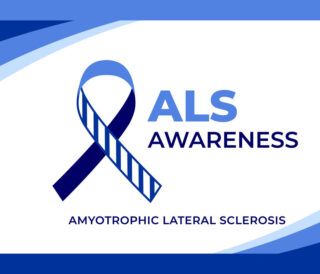
Prince George's County
9500 Medical Center Drive
Suite #250
Largo, MD 20774
Anne Arundel County
90 Ritchie Highway
Suites A & B
Pasadena, MD 21122
Charles County
2505 Davis Road
Waldorf, MD 20603
Burnett Center for Hope & Healing
P.O. Box 838
4559 Sixes Road
Prince Frederick, MD 20678

More Hospice & Palliative Care Articles
Living With ALS

How Supportive Care Can Help People Take Control
With all the difficulties that come with amyotrophic lateral sclerosis, or ALS, losing control of one’s body is perhaps the scariest. This progressive degenerative neurological disease destroys the motor neurons, which power voluntary movements and muscle control. Over time, little by little, the patient loses control of all functions, taking away their ability to speak, eat, move and breathe.
Taking control of how to live with their disease is why ALS patients should seek supportive care from the moment of diagnosis. Also known as palliative care, supportive care is not hospice care, but rather a medical specialty that collaborates with a patient’s primary care physician, neurologist and other specialists to help you manage symptoms. Supportive care will be by your side as you walk the journey of this rare and often rapid debilitating illness. Nurse practitioners work with a care team and ALS patients to help manage pain like muscle cramps and nerve tingling and offer therapies and medicine that can help maintain function and strength as long as possible.
ALS doesn’t solely affect a patient but their loved ones, too. We help caregivers learn to feed, assist in physical therapy, and other help with daily activities. Caregivers can call to ask questions and most importantly, talk with someone who will encourage them, give guidance and help them to know they are doing it right. Social workers can connect caregivers with community resources like support groups or access to funds or resources.
The goals of care change frequently over the trajectory of the disease. As a nurse practitioner, I help families keep their advance directives and MOLSTs, or medical orders of life-sustaining treatments, up to date as the illness progresses. We guard the quality of life by being honest and building a trust with the patient and family by having frequent conversations as new symptoms develop. By being realistic about the disease and its trajectory, the patient and family can better decide what will help them meet their overall goals.
This is a rare disease that has no cure, but research specialists around the world are making new discoveries all the time. Supportive care is on the side of aggressively treating and participating in efforts to find a cure. We’re here for the long haul to give you the support you need for both quality and quantity of life.
Other Articles You May Find of Interest...
- Don’t Deny Your Loved One Comfort Because Of These Morphine Myths
- Living With ALS
- COPD: When Is It Time To Choose Hospice Care?
- How Hospice Social Workers Make Everyday Moments That Matter
- Volunteers Are Vital Members Of The Hospice Clinical Team
- Courageous Conversations Are a Gift to Those You Love
- Improving Access For Blacks To Hospice and Supportive Care

















